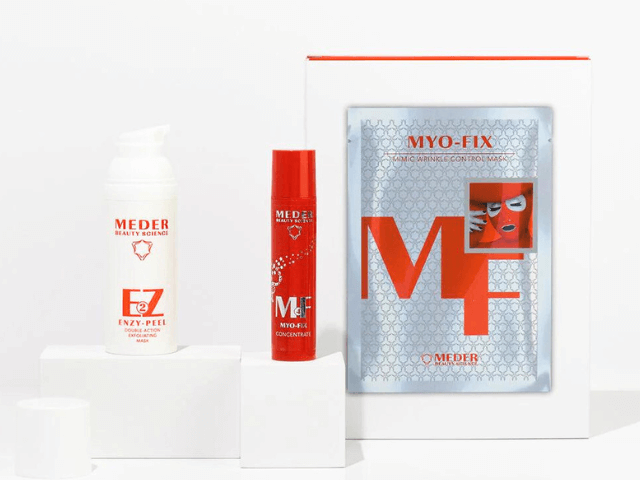Australian Budget 2024-2025: Key Insights and Impact
4 September 2024
When determining treatment choices and doses a comprehensive consultation reviews clients:
The traditional approach to gaining accurate insight into the skin’s health is the key deciding factor for an effective treatment plan. But a new study provides scientific evidence of another determining factor. Seasonal and climatic considerations.

Recent findings
The study included 523 women, aged 35-60 years, who received glabellar botulinum toxin treatment between 2012 and 2019 from a single provider practising in two different centres, one in the United Kingdom and the other in Malta.
“Patients subject to less sun exposure require a lower dose than patients with high sun exposure, and this was present and persisted when controlling for potential confounders,” researchers wrote.
Although robustly demonstrated, the difference in doses seen here is small, and may not necessarily change the number of vials used. However, it may be of relevance to training staff and establishing changes to treatment protocols.
The study indicated that rigid protocols about doses and distributions may lead to undertreatment if applied in sunnier climates.

In an interview with Medscape Medical News, Pooja Sodha, M.D., director of the Centre for Laser and Cosmetic Dermatology at George Washington University, Washington, DC, commented: “that the study highlights the importance of tailoring neuromodulator treatment to the individual patient based not just on gender but also on lifestyle and climate.”
“The conclusion of the study is logical, but it’s encouraging that the data supports this. The potential confounders, such as injection technique (5-point vs 3-point), nonblinding of the evaluator, history of prior treatments, and variation in treatment effect by different botulinum toxin products may be important as well in how we consider this data in practice,” said Dr Sodha.
What the study reveals for non-injectable skin treatments
While the study specifically measured how seasonal changes impacted the need for treatment doses of Botulinum Toxin A, the study highlighted the impact that climatic changes can have on the skin.
Here are some additional areas to investigate during your consultation:
Summer-focused precautionary measures
Frequent squinting and their impact on dynamic wrinkles
Increase levels of sun exposure
The rise in skin inflammation due to the impact of hot weather
Increase levels of facial perspiration
Change in pH
Impact on Skin Immunity
Talk to your supplier for appropriate formulations to strengthen barrier function or contact us for a list of skincare companies.
Read below for more insight on Winter precautionary measures
Decrease level of sebaceous gland secretion
Lip dryness can be avoided with hydration
Your clients should avoid hot showers
Skin might be prone to irritation
Go gentle on exfoliation
Don’t neglect sun protection
Energising skin treatments
Effective treatment with a focus on dynamic wrinkles
Our emotions create a mimic mask of sorts. Strong summer light can also contribute to squinting more frequently.

We spoke with dermatologist Dr Tiina Meder and formulator of Meder Beauty Science about her topical treatment solution.
Find out how the Meder Myo-Fix treatment can help your clients

All the mask’s peptides are minute small molecules that easily penetrate the skin. Studies show that the first application reduces the mobility of mimic muscles by 20–30 per cent and with regular use the muscles of the upper third of the face may become 50–60 per cent less active in their surface parts.

The neuromuscular blocking (myorelaxant) peptide-based cosmetics are commonly nicknamed serene face solutions.
What ingredients should I be aware of?
Acetyl Hexapeptide-3
Palmitoyl Tripeptide-1: Helps restore the thickness of the dermis, hydrates the skin and enhances the syntheses of collagen, elastin and hyaluronic acid quickly filling in the wrinkles.
It is one of the most potent rejuvenating ingredients in the beauty industry today.
Palmitoyl Tetrapeptide-7: A cell messenger, Palmitoyl Tetrapeptide-7 restores the communication and metabolic processes in the mature skin. It stimulates the syntheses of collagen and elastin, tones up and moisturises the skin, restoring its elasticity and resilience, and helps fill in the wrinkles.
SH Oligopeptide-1: Biopeptide nonapeptide 1, Human Epidermis Growth Factor earned its creators, neurobiologists Rita Levi-Montalcini and Stanley Cohen, the 1986 Nobel Prize in Physiology. Epidermis Growth Factor is a peptide able to restart the decelerated or stopped-with-age processes of collagen, elastin, and hyaluronic acid’s syntheses in the skin.

Dr Meder advises aesthetic professionals to recommend the masks to their clients both during a course of treatment and before and after any traumatic procedures including facial surgery, as well as for the clients’ regular use at home to maintain the skin’s health.
In the winter issue of APJ Journal, we will be conducting a comprehensive interview with Dr Meder on this important topic as well as the recent regulatory changes in Europe relating to ingredient safety and consider how this will also potentially impact Australian TGA regulations on specific ingredients.
In the meantime, you can contact Meder Beauty Science for more information
Reference to the Botulinum Toxin A Study:
Borsky, Kim L. MBBS, MD1; Rodrigues, Jeremy N. MBA, PhD, FRCS1,2; Rodrigues, Raina MBA, PhD, FRCS3,4. The Effect of Climate on the Dose Requirements of Botulinum Toxin A in Cosmetic Interventions. Plastic and Reconstructive Surgery 154(1):p 57e-62e, July 2024. | DOI: 10.1097/PRS.0000000000010913